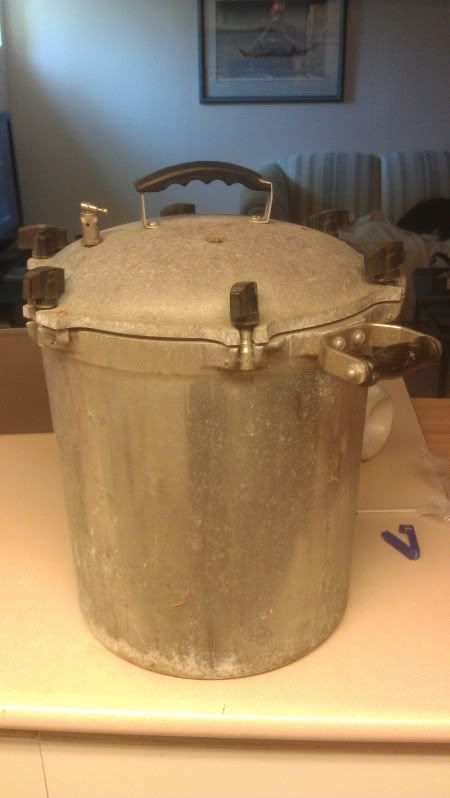ZOMBIEREPELLENT
Sr Member
Hey guys, check out my recent score!

I was helping my landlord clean out his garage, so I could cast my proton pack shells without worrying about the weather, and he threw this on the trailer to be taken to the dump! I wasted no time in claiming it, I've started cleaning it up with some high grit sand paper and some steel wool, its inner diameter is about 13" and about 13" deep. He used to use it for canning, and before that he used it to sterilize tattoo needles and whatnot. It's missing the gauge but I figured those are easy enough to replace.
My question is, what parts will I need to make this into a good vacuum/pressure casting chamber? How many CFM will I need to be able to pump to make it efficient? At some point and time I was thinking of making an acrylic top for it so I could see silicones when I degass them but that's not my top priority right now. It's my understanding that the set up is identical but using a vac in the place of a compressor. Or am I wrong?
Thanks for your guys input!

I was helping my landlord clean out his garage, so I could cast my proton pack shells without worrying about the weather, and he threw this on the trailer to be taken to the dump! I wasted no time in claiming it, I've started cleaning it up with some high grit sand paper and some steel wool, its inner diameter is about 13" and about 13" deep. He used to use it for canning, and before that he used it to sterilize tattoo needles and whatnot. It's missing the gauge but I figured those are easy enough to replace.
My question is, what parts will I need to make this into a good vacuum/pressure casting chamber? How many CFM will I need to be able to pump to make it efficient? At some point and time I was thinking of making an acrylic top for it so I could see silicones when I degass them but that's not my top priority right now. It's my understanding that the set up is identical but using a vac in the place of a compressor. Or am I wrong?
Thanks for your guys input!

